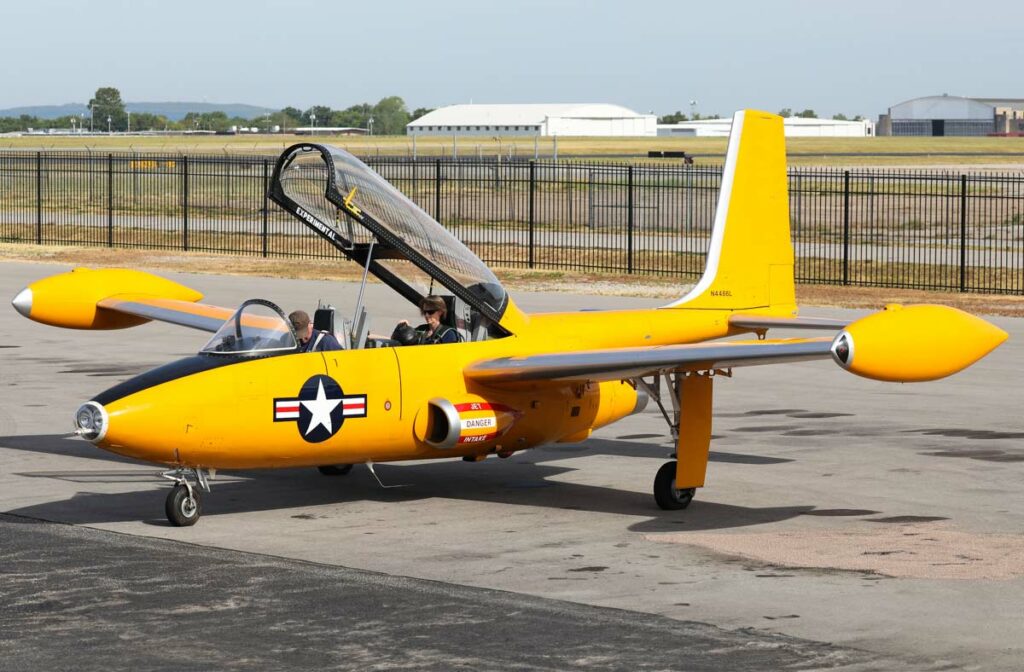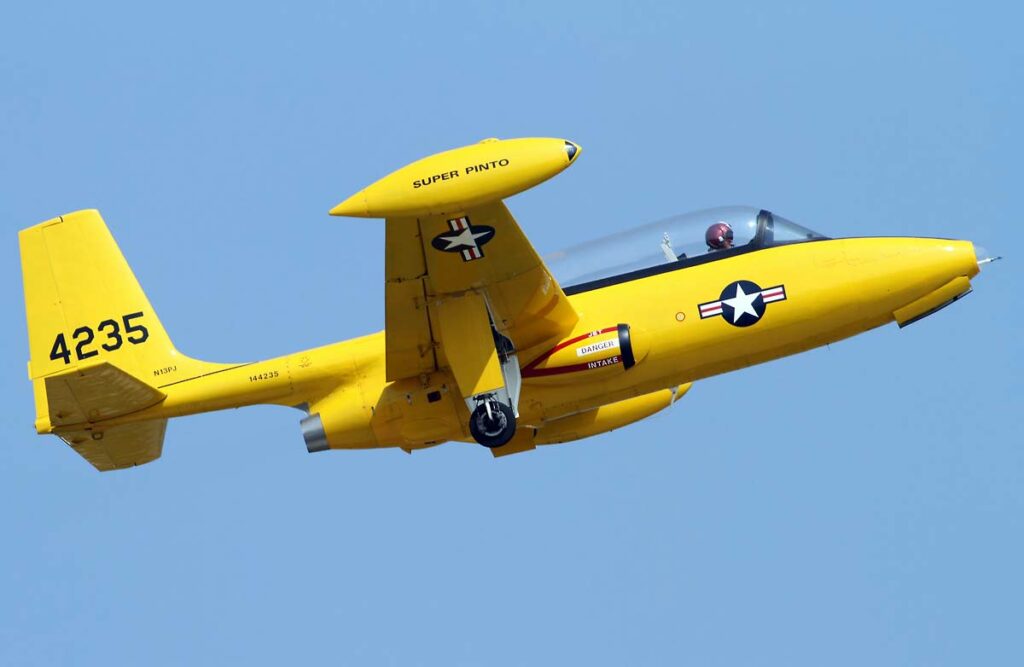The TEMCO TT-1 Pinto is a jet-powered primary trainer designed for the U.S. Navy in the 1950s, known for its simplicity and efficiency.
In brief
The TEMCO TT-1 Pinto was a small, single-engine, jet-powered aircraft developed as a primary trainer for the U.S. Navy in the late 1950s. It featured a straight-wing design, tricycle landing gear, and was powered by a Continental J69 turbojet engine. The Pinto was designed to offer a cost-effective transition for pilots moving from propeller-driven trainers to high-performance jet aircraft. With a maximum speed of around 345 miles per hour and a range of approximately 460 miles, the TT-1 was notable for its simplicity, ease of maintenance, and reliability. Despite its potential, the Pinto saw limited production and service, as it was ultimately surpassed by other training aircraft in terms of capabilities and adoption.

Introduction
In the post-World War II era, the rapid advancement of jet technology necessitated the development of training aircraft that could prepare new pilots for the demands of modern jet flight. Recognizing this need, the U.S. Navy sought proposals for a jet-powered primary trainer that would bridge the gap between basic propeller-driven trainers and advanced jet fighters. TEMCO (Texas Engineering & Manufacturing Company) responded with the TT-1 Pinto, aiming to create an aircraft that was both easy for beginners to fly and capable of introducing them to the characteristics of jet-powered flight.
The TT-1 Pinto program was launched in the mid-1950s, with the prototype making its first flight in 1956. The development of the Pinto was driven by the Navy’s desire to modernize its training fleet and provide a seamless progression for pilot training.
Design
The design of the TEMCO TT-1 Pinto emphasized simplicity, cost-effectiveness, and the specific needs of primary flight training. The aircraft featured a straight-wing configuration, which offered good low-speed handling and stability—crucial attributes for a trainer. Its tricycle landing gear facilitated easier ground handling and takeoffs compared to the tail-dragger configuration common in earlier trainers.
The Pinto was powered by a Continental J69 turbojet engine, a license-built version of the French Turbomeca Marboré, producing approximately 920 pounds of thrust. This powerplant was chosen for its reliability and ease of maintenance, important considerations for a training aircraft.
With a length of 10.1 meters (33 feet) and a wingspan of 10 meters (33 feet), the TT-1 was compact and agile. Its cockpit was designed to be conducive to learning, with clear visibility and straightforward instrumentation. However, the Pinto’s simplicity also meant it lacked some of the advanced features and performance characteristics of later jet trainers, limiting its appeal as training needs evolved.
Performance
The TEMCO TT-1 Pinto’s performance was tailored to its training role, with a maximum speed of 345 mph (555 km/h) and a service ceiling of 25,000 feet (7,620 meters). Its range was approximately 460 miles (740 kilometers), adequate for training missions but less than that of more advanced trainers.
While the Pinto’s performance was modest compared to frontline jet fighters, it was considered appropriate for its intended role as a primary trainer. Its jet engine provided a taste of the power and speed of more advanced aircraft, without overwhelming novice pilots. However, when compared to contemporaneous and subsequent training aircraft like the Cessna T-37 Tweet, the Pinto was outmatched in terms of versatility, range, and adaptability to advanced training roles.
Variants
The TEMCO TT-1 Pinto saw limited production, with only a small number of aircraft built. There were no significant variants of the Pinto, as the program did not advance beyond its initial production run for the U.S. Navy. The focus remained on the standard TT-1 configuration, designed to meet the specific requirements outlined for a primary jet trainer.

Military Use and Combat
The TEMCO TT-1 Pinto was primarily intended for use as a training aircraft and did not see combat service. Its role was to introduce Navy pilots to the fundamentals of jet flight in a controlled, instructional environment. The Pinto was evaluated by the U.S. Navy, but it did not enter widespread service, as the Navy opted for other aircraft to fulfill its training needs.
The TT-1 did not see export to other countries or significant operational use beyond its evaluation and limited training roles within the United States. As pilot training requirements evolved and more capable trainers became available, the Pinto was phased out in favor of aircraft with greater performance and versatility.
The TEMCO TT-1 Pinto represents an interesting chapter in the history of military aviation, particularly in the context of jet pilot training. While it offered a practical and cost-effective solution for transitioning pilots to jet-powered flight, the rapid advancement of aviation technology and training methodologies ultimately limited its impact and service life. The Pinto’s development and brief service underscore the challenges and considerations in designing effective training aircraft to meet the ever-evolving needs of military aviation.
Back to the Trainers section.